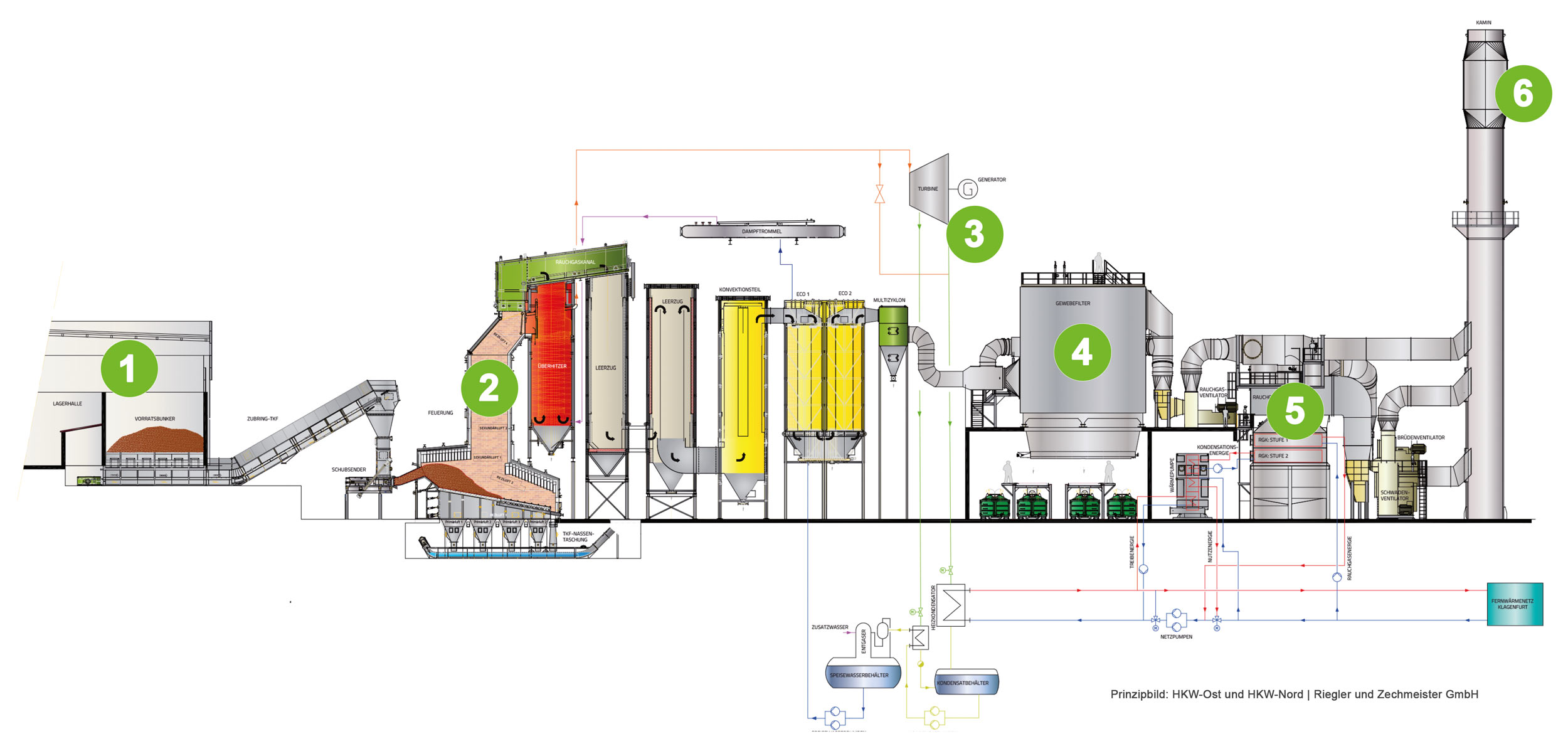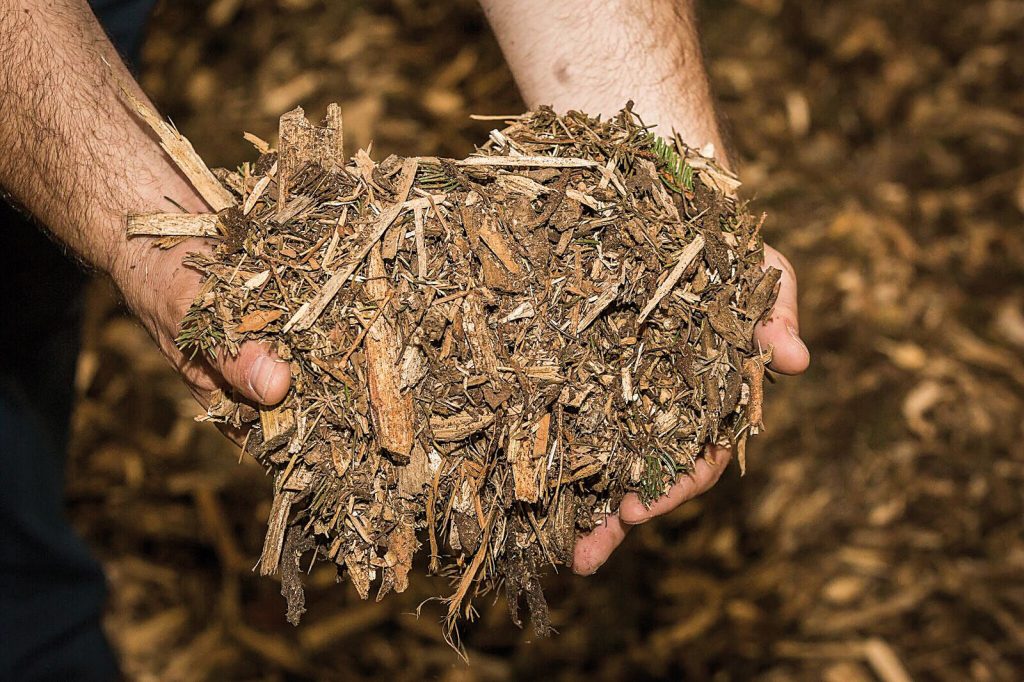Bioenergie Kärnten’s biomass cogeneration plants use by-products from forestry (logging residue, branches, coarse wood chips). If this exclusively untreated raw material, which arises during timber harvesting and forest management, were to remain unused, it would barely be possible to keep down pests such as bark beetles and the environmental balance would be jeopardised. Biomass is therefore essential for forest management and a functioning timber market in Austria.
New standards
in biomass-fired plants
- Levels of efficiency exceeding 90% in the heating period due to heat recovery by means of flue gas condensation and absorption heat pump
- NOx limit value below 80 mg/mN3 due to developed Low NOx technology
- Dust limiting value below 3mg/mN3 due to state-of-the-art fabric filter technology

Superheated high-pressure steam for the cogeneration of power and heat is produced in the steam boiler plants from untreated biomass. The steam boiler plants are designed as naturalcirculation steam boilers with a water tube structure which, due to the correspondingly low specific load and low flue gas flow velocities in all firing and boiler components, do not require any cleaning of the heating surfaces. This design philosophy is ultimately the basis for low-emission combustion but also for high combustion efficiency with a long service life.
A multi-stage reaction steam turbine with the highest possible turbine efficiency was selected as the steam turbine which is used purely as a “heating turbine”. All the exhaust steam is therefore converted into hot water for heat extraction in the heat exchanger arranged below (= heating condenser). The energy released during steam expansion in the turbine drives the turbine rotor, which transfers the energy to the generator via the spur gear for electricity generation. The net electricity generated is fed into the public grid.
New standards for dust limit value in biomass-fired plants. The dust level falls significantly below dust limit values of 3 mg/mN3 due to the use of cutting-edge fabric filters.
State-of-the-art heat recovery systems which exceed efficiency levels of above 90% during the heating period were installed in the Klagenfurt Ost and Liebenfels Nord biomass cogeneration plants. The technology employed extracts the latent heat from the exhaust gas at very low temperature and uses the absorption heat pump to raise it to a temperature level suitable for use in the district heating network.
The flue gas leaves the stack at approx. 30°C so there is no formation of steam clouds.
Sustainable and regional
Biomass from the region
Using biomass in heat-controlled cogeneration plants is the most efficient form of thermal power generation.
Biomass uses forest by-products and residual materials and is considered an optimum source of sustainable energy. Biomass cogeneration plants replace coal-fired, oil-fired and nuclear electricity, protect our climate and can replace oil as the most important energy source by 2030.
The use of biomass for producing energy is a significant revenue stream for many agricultural enterprises which promotes not only the local economy but also the rural area.
Biomass delivers clean energy from our region and is completely carbon neutral. Biomass is considered a clever and sustainable energy source which reduces greenhouse gases and prevents catastrophic environmental impacts on humanity.

